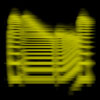| Author
|
Relation between Q factor and bandwidth BW??
|
mikechedelic
IsraTrance Junior Member

Started Topics :
29
Posts :
104
Posted : Jul 5, 2011 06:18:54
|
|
vipal
IsraTrance Full Member

Started Topics :
123
Posts :
1397
Posted : Jul 5, 2011 06:54
|
i dont get it all either but it looks pretty harmless to me. Q you find on every EQ. Low Q means EQ works on a wider area of frequencies. some people say that on low freqs its better to use high Q (sharp peak) and for higher fequencies a lower Q (wider curve) to treat the soundmaterial. you probably need this math stuff only if you design filters and EQ´s. in general its better to get good monitors than a math degree if music production is concerned.
        http://soundcloud.com/vipal http://soundcloud.com/vipal |

|
|
Vermeee
IsraTrance Full Member

Started Topics :
108
Posts :
1069
Posted : Jul 5, 2011 08:53
|
the harmonics in the low areas are "smaller" than the ones frmo the high frequencie areas...
so lets say u are doin a b1 bass, the main frequency would be 30 hz , but then at the very side of it u have c1 which is 32 hz...
so if u want to cut or boost the 30 hz u ll wish a bigger Q ( smaller range ) so u make no interference in the harmony of the sound...
but then lets say u are doin a high lead.... usin b7 as the root key of that lead.... the frequency range is at 1975.5hz ... while the next key ( c7 ) is at 2093hz
u see how many space u have left from b7 to c7? the spectrum range of the high frequencies are bigger and bigger and bigger the more u go high...
so thats why for low ends would be apropriate to use big number Q and for high ends small number Q... but there are a lot of situation that those rules would be broken...
lets say u are doin the B1 root key bass.... but in this bass u are trowin scales ( B B D as exemple) ... the D1 is 36.7 and the b1 is 30 ... so if u want to boost them u could use a small Q ( wider range ) beetween that spectrum range so u boost both frequencies since u are using both...
those are my experience with EQ and the Q  if there s something wrong i hope someone can correct me.. if there s something wrong i hope someone can correct me..
but talkin bout the math u showed in that site... i can only say one thing...its SCARIN lol...
       
http://soundcloud.com/bgos |

|
|
Djones
IsraTrance Senior Member

Started Topics :
267
Posts :
1766
Posted : Jul 5, 2011 20:18
|
Quote:
|
On 2011-07-05 08:53, Vermeee wrote:
the harmonics in the low areas are "smaller" than the ones frmo the high frequencie areas...
so lets say u are doin a b1 bass, the main frequency would be 30 hz , but then at the very side of it u have c1 which is 32 hz...
so if u want to cut or boost the 30 hz u ll wish a bigger Q ( smaller range ) so u make no interference in the harmony of the sound...
but then lets say u are doin a high lead.... usin b7 as the root key of that lead.... the frequency range is at 1975.5hz ... while the next key ( c7 ) is at 2093hz
u see how many space u have left from b7 to c7? the spectrum range of the high frequencies are bigger and bigger and bigger the more u go high...
so thats why for low ends would be apropriate to use big number Q and for high ends small number Q... but there are a lot of situation that those rules would be broken...
lets say u are doin the B1 root key bass.... but in this bass u are trowin scales ( B B D as exemple) ... the D1 is 36.7 and the b1 is 30 ... so if u want to boost them u could use a small Q ( wider range ) beetween that spectrum range so u boost both frequencies since u are using both...
those are my experience with EQ and the Q  if there s something wrong i hope someone can correct me.. if there s something wrong i hope someone can correct me..
but talkin bout the math u showed in that site... i can only say one thing...its SCARIN lol...
|
|
Interesting stuff.
Learned something today, thanks  |

|
|
Psynthax

Started Topics :
1
Posts :
15
Posted : Jul 5, 2011 20:43
|
It is the math on which is calculated Q factor in relationship to the octaves in bandwidth... there is table down on the site where you have octave relations calculated and their Q values.. very good site indeed.. no need to use formulas, its all there in the tables.. 
So.. when you set Q of 1.40 you have a bandwidth range of 1 octave ( calculated -3db down from the center frequency ).. no metter where you are in the frequency range.. it will span itself thru the 1 octave with that Q..
You asked how is this related to music.. well.. in music you use notes, octaves, ect.. not frequencies.. so if you think about it you will find the relationship and why are those formulas useful 
        . .
http://soundcloud.com/psynthax |

|
|
Shiranui
IsraTrance Full Member
Started Topics :
116
Posts :
1219
Posted : Jul 6, 2011 21:03
|
|
That is only true for bandpass filters. With lowpass or highpass filters, the Q-factor is more analogous to resonance--the bandwidth stays the same. |

|
|
Colin OOOD
Moderator

Started Topics :
95
Posts :
5380
Posted : Jul 6, 2011 21:37
|
Quote:
|
On 2011-07-05 08:53, Vermeee wrote:
the harmonics in the low areas are "smaller" than the ones frmo the high frequencie areas...
so lets say u are doin a b1 bass, the main frequency would be 30 hz , but then at the very side of it u have c1 which is 32 hz...
so if u want to cut or boost the 30 hz u ll wish a bigger Q ( smaller range ) so u make no interference in the harmony of the sound...
but then lets say u are doin a high lead.... usin b7 as the root key of that lead.... the frequency range is at 1975.5hz ... while the next key ( c7 ) is at 2093hz
u see how many space u have left from b7 to c7? the spectrum range of the high frequencies are bigger and bigger and bigger the more u go high...
so thats why for low ends would be apropriate to use big number Q and for high ends small number Q... but there are a lot of situation that those rules would be broken...
lets say u are doin the B1 root key bass.... but in this bass u are trowin scales ( B B D as exemple) ... the D1 is 36.7 and the b1 is 30 ... so if u want to boost them u could use a small Q ( wider range ) beetween that spectrum range so u boost both frequencies since u are using both...
those are my experience with EQ and the Q  if there s something wrong i hope someone can correct me.. if there s something wrong i hope someone can correct me..
but talkin bout the math u showed in that site... i can only say one thing...its SCARIN lol...
|
|
Q values determine the range of frequencies affected by an EQ curve, for sure, but they are measured on a logarithmic scale and refer to a bandwidth measured in fractions of an octave. This means that a given Q value will affect the same number of notes of a scale at low frequencies as it will at high frequencies.
        Mastering - http://mastering.OOOD.net :: www.is.gd/mastering Mastering - http://mastering.OOOD.net :: www.is.gd/mastering
OOOD 5th album 'You Think You Are' - www.is.gd/tobuyoood :: www.OOOD.net
www.facebook.com/OOOD.music :: www.soundcloud.com/oood
Contact for bookings/mastering - colin@oood.net |

|
|
Vermeee
IsraTrance Full Member

Started Topics :
108
Posts :
1069
Posted : Jul 6, 2011 23:00
|
hmm so if i use a Q of 1.4 at low frequencies...but then i move this notch to the high frequencies.... that 1.4 value of the Q will be automaticly be scaled out to affect the exact number of notes it was doin in the low frequency ?
       
http://soundcloud.com/bgos |

|
|
Colin OOOD
Moderator

Started Topics :
95
Posts :
5380
Posted : Jul 6, 2011 23:04
|
|
Vermeee
IsraTrance Full Member

Started Topics :
108
Posts :
1069
Posted : Jul 7, 2011 00:44
|
Quote:
|
On 2011-07-06 23:04, Colin OOOD wrote:
I believe so 
|
|
wow looking at the PAZ ANALIZER is easy to vizualize such thing...i wasnt understand why it would change the same amount of notes but now i do 
each square in there s an octave and it s scaled.... EG the second square goes from 16 to 31 hz and the last 8000 to 16000 
and then the parametric eqs are build in same way
thanks
       
http://soundcloud.com/bgos |

|
|